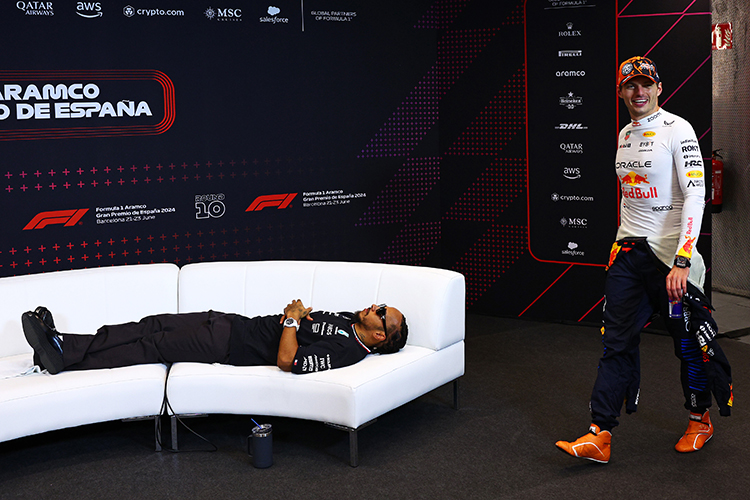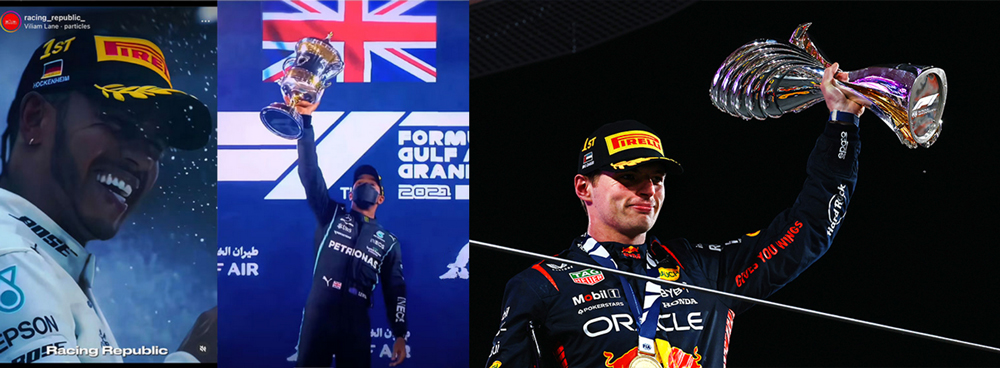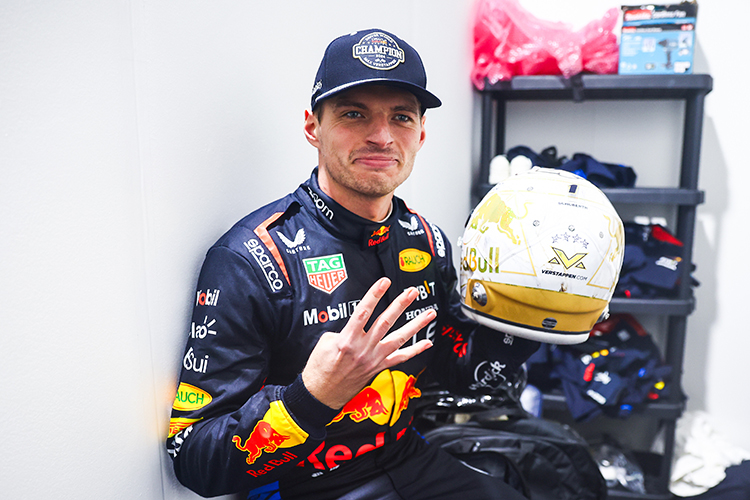F1 teams' power dynamics: who's the clear No. 1?
F1's Balance of Power: Evaluating Each Team's Clear-Cut No. 1 Driver
Formula 1 teams are designed to operate as a cohesive unit, but the fierce competition and individual ambitions of the drivers often lead to internal power struggles. In F1, the first target for drivers is often their teammate, creating a unique dynamic within the sport.
This year, the balance of power within teams is more critical than ever in determining the success of their seasons. Some teams have a clear hierarchy from the start, while others allow results to dictate the pecking order. Here, we break down the balance of power across the F1 grid.
McLaren
Norris 60% - Piastri 40%
Lando Norris enters the season as the established leader at McLaren. He secured four victories to Oscar Piastri's two last year and played a pivotal role in clinching McLaren's first constructors' championship of the millennium with a clutch drive in Abu Dhabi. Despite having the best car, McLaren braces for a complicated year.
The power dynamic could shift quickly if Piastri shines in the opening races, starting with his home race, the Australian Grand Prix in Melbourne. The team’s ability to manage this potential shift is uncertain, especially after last year's Hungarian Grand Prix debacle and the controversial "papaya rules" decision.
Ferrari
Hamilton 55% - Leclerc 45%
While Charles Leclerc has been Ferrari's face since 2019, Lewis Hamilton's arrival changes the dynamic considerably. Hamilton is the superstar signing with the trophies, backing, and expectations. Ferrari has emphasized an even playing field, suggesting Leclerc's familiarity with the team might balance Hamilton's star power.
Hamilton currently holds a slight edge due to the recent buzz and excitement, but Ferrari's internal tussle promises to be one of the most compelling intra-team battles in recent memory.
Red Bull
Verstappen 95% - Lawson 5%
Max Verstappen is unequivocally the leader at Red Bull, backed by his unmatched consistency and racecraft. This year, rookie Liam Lawson steps into the challenging role of Verstappen's teammate. With previous Red Bull teammates exiting with damaged reputations, Lawson faces the mammoth task of proving he belongs without expectations of matching Verstappen race-to-race.
Mercedes
Russell 70% - Antonelli 30%
With Lewis Hamilton's departure, George Russell stands poised to lead Mercedes into a new era. He has the necessary experience and wins, but his future beyond this year remains unresolved.
Rookie Andrea Kimi Antonelli enters with significant expectations, seen as Mercedes' future. His aggressive driving means a season of both highs and lows could lie ahead. Russell remains the proven and polished choice for now, but Antonelli's potential could narrow the gap quickly.
Aston Martin
Alonso 50% - Stroll 50%
Rather than a reflection of pure driving talent, Aston Martin's balance of power is influenced by team owner Lawrence Stroll's son, Lance Stroll, who seems to have a secure seat regardless of performance. Fernando Alonso leads on talent but within a team dynamic that supports his teammate's assured place. The team faces a complex balance where internal politics meets racing excellence.
Alpine
Gasly 90% - Doohan 10%
Pierre Gasly is Alpine’s clear leader, especially after orchestrating a double podium in Brazil last year. Rookie Jack Doohan's position appears precarious with Franco Colapinto waiting in the wings. Doohan needs to secure results quickly to ensure his position remains intact beyond the early stages of the season.
Haas
Ocon 75% - Bearman 25%
Esteban Ocon provides Haas with a level of experience they have never had before, giving him a strong edge over rookie teammate Oliver Bearman. Bearman, however, has shown impressive performances and is a prospect Ferrari values highly. While Ocon is the clear leader, Bearman is a young talent to watch.
Racing Bulls (formerly AlphaTauri)
Tsunoda 75% - Hadjar 25%
Yuki Tsunoda remains the stronger driver within the team, although a Red Bull seat seems unlikely. Isack Hadjar enters with low expectations, which might work to his advantage. Despite Tsunoda's strength, his future with Red Bull remains uncertain.
Williams
Sainz 50% - Albon 50%
Williams boasts a formidable lineup with Carlos Sainz and Alex Albon, both bringing unique strengths to the team. Sainz's pedigree and experience contrast with Albon's stability and deep team ties. The balance of power here is an open question as the season unfolds and both drivers vie for leadership.
Sauber
Hülkenberg 60% - Bortoleto 40%
Despite being at the back of the pack, Sauber features an exciting lineup. Nico Hülkenberg brings invaluable experience, while rookie Gabriel Bortoleto, the reigning Formula 2 champion, aims to prove his worth. Bortoleto's challenge is clear: outperforming Hülkenberg to establish himself as a rising F1 star.
The 2025 F1 season promises to be a thrilling year of driver dynamics and intra-team competitions that could dramatically influence the championship results. Each team's balance of power will undoubtedly be a key narrative as the season progresses.
Up Next



